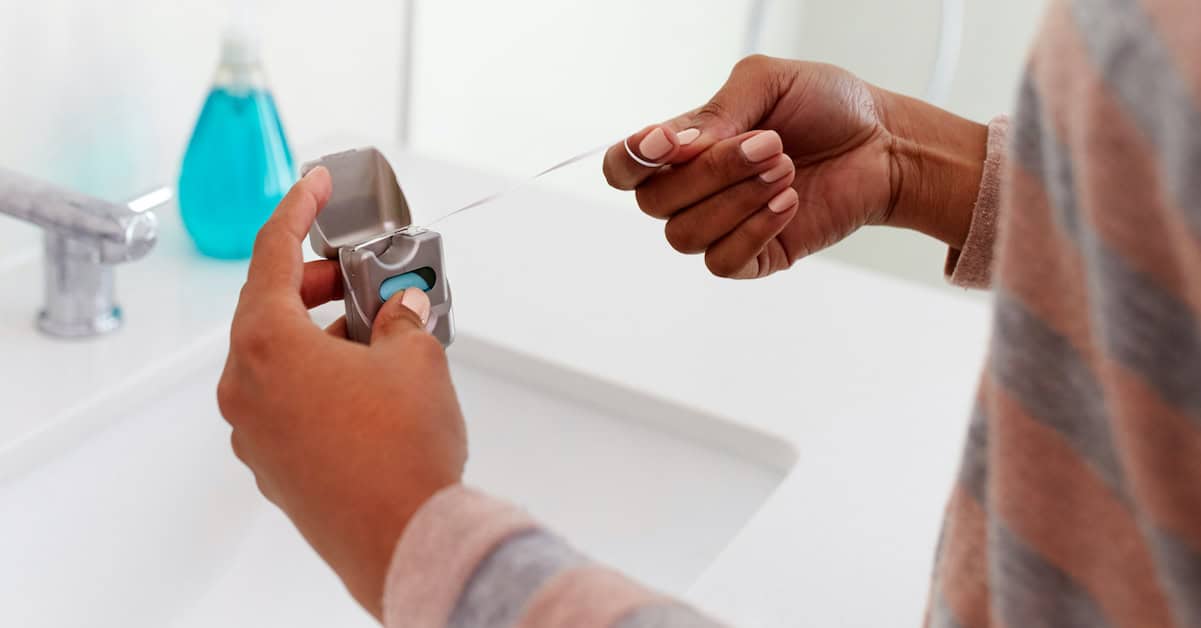The importance of maintaining good oral hygiene cannot be overstated. It not only keeps your teeth and gums healthy but also contributes to your overall well-being. Brushing and flossing are the two most fundamental aspects of oral hygiene. However, a question that often arises is – do I floss before or after brushing? This blog post will delve into this topic, providing you with a comprehensive guide on the best practices for flossing.
Understanding the Importance of Flossing
Before we answer the question, let’s first understand why flossing is so important for your oral and overall health. Flossing helps remove food particles, plaque, and bacteria that have built up between your teeth and under your gum line where your toothbrush can’t reach. If these particles aren’t removed, they can lead to tooth decay and gum disease.
Flossing also helps prevent bad breath by removing trapped food particles that cause an unpleasant odor when they break down. Regular flossing can even reduce your risk of heart disease by preventing bacteria in your mouth from entering your bloodstream. This is because there is a direct link between the bacteria in our hearts and oral cavity when there is a history of cardiovascular disease. Studies show that when you can decrease the harmful bacteria in your mouth that causes gum disease, you can significantly lower your risk for heart disease, which really makes you think of all the ways you can keep your oral health in top shape.
Patients constantly question, what is the best type of floss? There are numerous options based on your needs and preferences, but the most common includes traditional string floss, disposable floss sticks, and interdental flossers. All have a benefit in helping keep a clean mouth, so there is no real wrong answer!
Floss Before Brushing or After?
Now, back to our main question – should you floss before or after brushing? The answer isn’t as straightforward as you might think because both practices have their benefits.
Floss Before Brushing
The American Academy of Periodontology (AAP) recommends flossing before brushing. The rationale behind this is simple: when you dislodge food particles and plaque through flossing, brushing afterward helps to further clean these areas by washing away the loosened debris.
Moreover, if you floss first, fluoride from the toothpaste has a better chance of reaching between your teeth. In 2018, an AAP study found that there is more fluoride remaining in the mouth when you floss prior to brushing.
This strengthens these areas against decay and promotes healthier gums. Therefore, it is recommended to remove any appliances you may have that are removable, floss using floss sticks, traditional floss or an interdental flosser, and then finally use an ADA-approved fluoride toothpaste.
Some people prefer to use a mouthrinse when they are done brushing for a fresh taste or to help prevent tooth decay and gum disease. Mouthwash can kill bacteria in areas difficult to reach with dental floss or a toothbrush.
Floss After Brushing
On the other hand, some dental professionals suggest that it’s better to brush first and then floss afterward. The logic here is that brushing first removes the bulk of the plaque on your teeth. Flossing afterward ensures that any leftover plaque or food particles that the toothbrush missed are removed.
Ultimately, the most important thing is not whether you floss before or after brushing, but that you do both regularly and effectively.
The American Dental Association (ADA) has no preference whether one brushes or flosses first, only that the two step daily brushing and flossing is a consistent part of the oral hygiene regimen. Most dentists are happy when their patients will use a toothpaste and floss combo of their choice, regardless of the type or brand.
Tips for Effective Flossing
Regardless of when you choose to floss, doing it correctly is crucial for optimal oral health. Here are some tips to ensure effective flossing:
1. Use enough floss: The American Dental Association recommends using about 18 inches of floss so you can use a fresh section for each tooth.
2. Glide, don’t snap: Gently glide the floss between your teeth and along your gums to avoid causing any damage.
3. Follow the curve: Curve the floss around each tooth in a ‘C’ shape and gently slide it up and down to clean all sides.
4. Don’t forget the back: Many people forget to floss behind their last molars, where food particles can easily hide.
5. Floss at least once a day: The ADA recommends flossing once daily, but if you prefer to do it more, that is okay too.
6. Use the clean side: When you floss use the clean side and don’t reuse a piece. It is not recommended because it will continue to introduce bacteria back into the mouth.
Conclusion
In conclusion, whether you choose to floss before or after brushing largely depends on personal preference. There is more research supporting flossing prior to brushing, but daily flossing in general is better than nothing at all. What’s most important is that you’re taking steps towards maintaining good oral hygiene by incorporating both practices into your daily routine.
Once you start flossing daily, whether it is before or after brushing, you’ll quickly notice a positive change to your oral health including feeling a clean mouth and fresh breath. You will also be on a more upward journey of avoiding tooth decay, plaque, and gum disease!
Remember, regular check-ups with your dentist are also crucial in maintaining optimal dental health. They can provide personalized advice based on your oral health condition and needs. Contact us today for an appointment.

